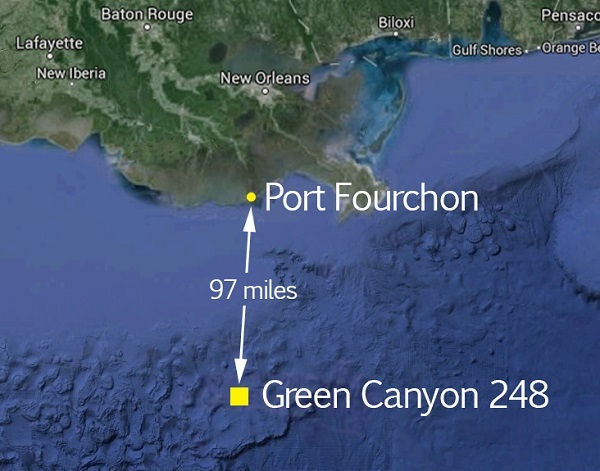Shell: Subsea Flow Line Leaked Oil Into the GoM
On Thursday, a 2,100-barrel oil spill in the U.S. Gulf of Mexico forced Royal Dutch Shell to shut in all wells flowing to its Brutus platform, said the U.S. Bureau of Safety and Environmental Enforcement (BSEE).
The agency reported that a roughly 2 nm by 10 nm sheen was visible off the Louisiana coast, near Shell's Glider Field, a group of four subsea wells whose production flows through a manifold to the Brutus platform.
 Image courtesy BSEE
Image courtesy BSEE
Shell spokesman Curtis Smith said a helicopter spotted the sheen on Thursday and that it isolated the leak and shut in production. The oil major emphasized that the situation was fundamentally different from a drilling incident. "There are no drilling activities at Brutus, and this is not a well control incident," Shell said.
Brutus has a maximum output of 100,000 barrels of oil and 150 million cubic feet of gas per day, and has been in operation since 2001.
Shell determined Friday that a faulty flow line leading from the wells to the platform was the source of the leak. Authorities said the cause of the incident is under investigation.
Shell said no injuries resulted from Thursday's spill and that it has mobilized response assets, including aircraft and five skimmer vessels, to monitor and mitigate the effects. The U.S. Coast Guard says that it is responding to the incident as well.
"It's unacceptable that oil spills have been permitted to become the status quo in the Gulf," said Michael Brune, executive director of the Sierra Club. "We have allowed the region to be perpetually treated as a sacrifice zone." BSEE data shows 147 reported spills totalling to more than 500,000 gallons in the Gulf since 2012, says ABC News.
While Shell did not directly respond to activists' comments, Kimberly Windon, a Shell spokeswoman, said that "no release is acceptable, and safety remains our priority as we respond to this incident."
BSEE Director Brian Salerno told ABC that in the wake of the incident, the agency would review "subsea infrastructure technology" and determine whether current standards were sufficient.
